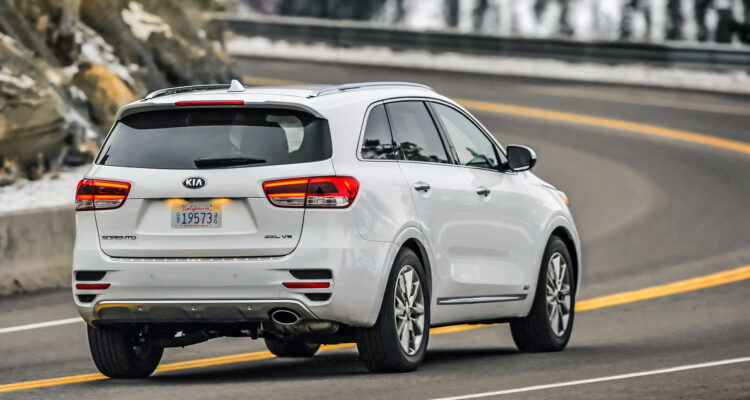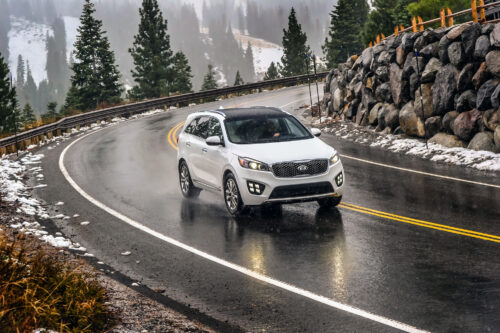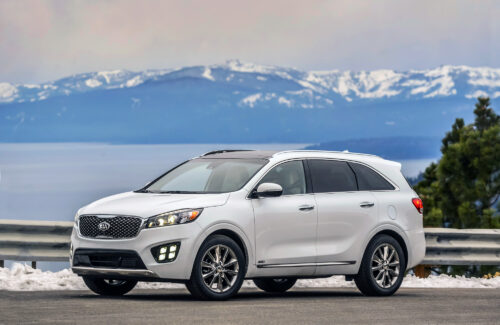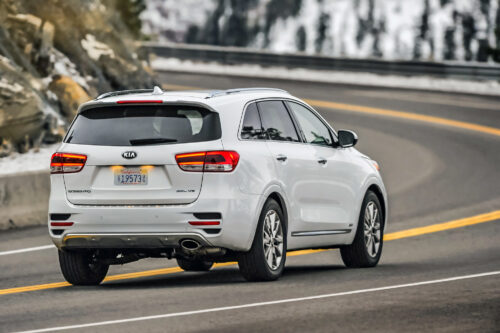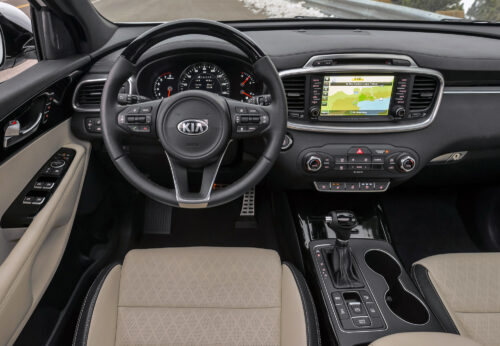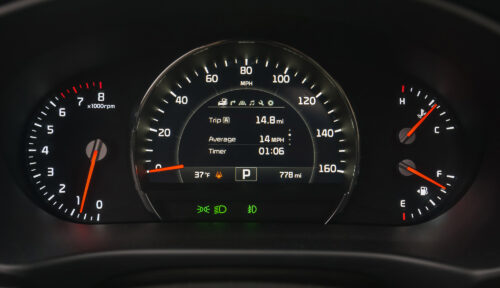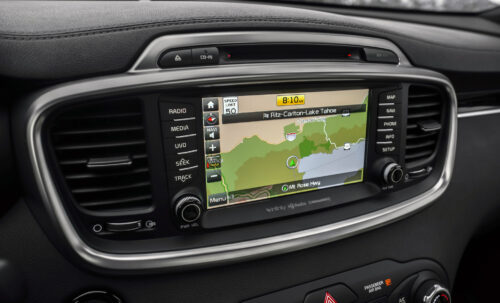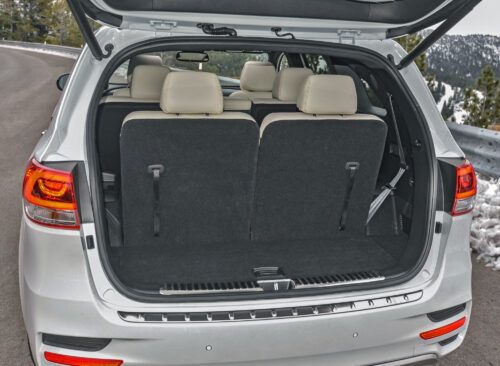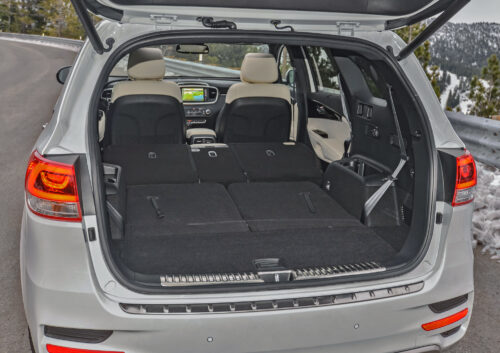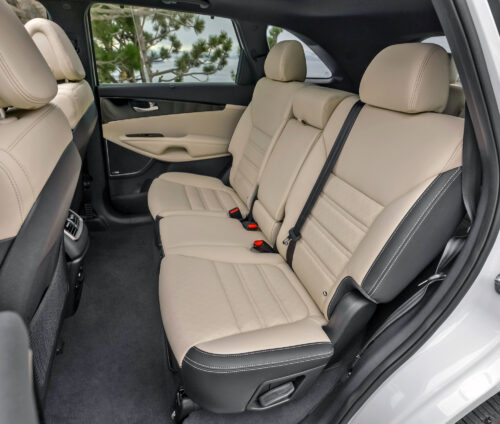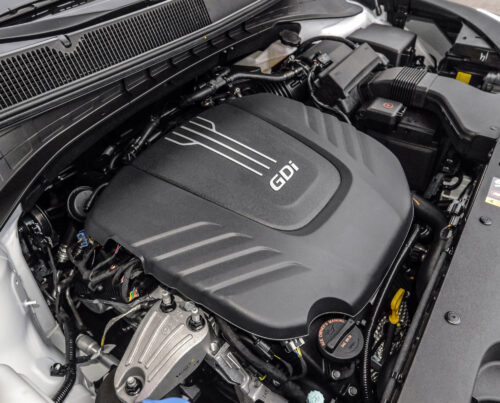Here’s everything I didn’t like about the 2017 Kia Sorento:
That’s not a typo. Sure, I could invent some silly complaint in a vain attempt to be critical, but it’s hard to find fault, and that is saying something considering I broke the first Sorento I drove.
Or at least, that’s how the Kia PR people initially saw it. It was in the early 2000s and Kia was hosting a ride-and-drive for the first Sorento, the company’s first foray into mid-size crossovers. At the time, it didn’t have a third-row option, nor did it, apparently, have much in the way of reliability.
As we hit the off-road portion of the drive route, I turned the knob to activate 4High, precisely according to the owners’ manual instructions. After some gnashing of gears, that vehicle’s day was done. The engine revved as though it were in neutral and no amount of knob-turning resolved the issue.
As the Sorento evolved, so did its reliability. For the previous generation, Sorento evolved so much, it stopped being Korean. Almost. Kia builds Sorento in West Point, Ga., at a plant locals still hail as the economic saviour for the region devastated by the collapse of the U.S. textiles industry.
The newest Sorento borders on full-size, with a third-row option and generous amount of cargo space. Thanks to having the dash pushed forward, creating an airy cockpit, the cabin feels more spacious than its numbers betray.
It comes with three engine options: a 2.4-litre four-cylinder, a 2.0-litre turbo and a 3.3-litre V-6. The transmission is a six-speed automatic, and all-wheel-drive is standard on all models except the base-model 2.4-litre.
If you want towing, the V-6 is your choice: it ups the Sorento’s towing capacity to 5,000 pounds and I’d recommend a V-6 for all but the lightest-duty towing requirements. Towing with the 2.4 is limited to 2,000 pounds and 3,500 with the 2.0-litre turbo.
Indeed, I think I’d recommend the V-6, period. The 2.4 would be in over its head if you had it loaded with five people and their stuff (a seven-seater option is only available with the V-6. Gee, ya think?), and the turbo would be fun, but I’m leery of turbos as long-term service items.
Between the Sorento and the Toyota Highlander in the driveway as I write this, I’m picking the Sorento. Its driving characteristics feel much more in tune with the driver and the road, and the throttle mapping of the Sorento is superior, allowing for a quite sprightly launch if you want it. I would probably give a slight edge on build quality to the Highlander, but not enough to be a deal-breaker.
The Sorento feels very carlike, despite its height. It’s only when you get out, or when you look behind you inside, are you reminded it’s an SUV. I also give Kia credit for making the third row an option: A lot of customers won’t really need it, and you pick up a small amount of cargo space without it.
Another Kia trait that has gone by the wayside, thankfully, is red-on-black for a colour scheme for the instrument panel and audio system display. The contrast was awful, so it’s nice to see a lighter colour on black on both, which gives you the chance to actually see what you’re looking at.
If there was one suggestion I’d make to Kia, it would be to improve the refinement of the heating and air-conditioning control centre. The build quality is excellent and it’s easy to use, but the control centre just seems to sit there, with little in the way of details to tie it to the rest of the striking dashboard. A small bit of brushed aluminum trim as a bezel, or integrating it into the audio system control panel in some way would tie it all together.
A small nit to pick, I’ll admit.
The comfort of the seats is high, and appreciated is the fact that even when you option it up to include ventilated seats, the seat heaters are still electrical elements just behind the seat cover. Carmakers who opt for pumping heated air through the same system as the ventilation end up with seats that don’t heat up all that well.
Interesting difference between LX and EX models and the SX: LX and EX models both get a column-mounted power assist unit for the steering, while SX gets a rack-mounted unit. The advantages of the latter include better feedback through the steering wheel and more precise steering input. Why it’s limited to the SX is unclear.
2017 Kia Sorento
Engine: 2.4-litre normally aspirated four-cylinder; 2.0-litre turbocharged four-cylinder, 3.3-litre direct-injection V-6
Power: 185 hp @ 6,000 rpm (2.4); 240 @ 6,000 rpm (2.0t); 290 hp @ 6,400 rpm (V-6)
Torque: 178 lb-ft. 4,800 @ rpm (2.4); 260 lb-ft @ 1,450-3,500 rpm (2.0t); 252 lb-ft @ 5,300 rpm (V-6)
Brakes: four-wheel discs
Suspension: independent MacPherson strut, dual-flow dampers, coil springs, stabilizer bar (front); independent multi-link, dual-flow dampers, coil springs, stabilizer bar (rear)
Steering: column-mounted electronic power steering (LX/EX); rack-mounted electronic power steering (SX)
Fuel economy (l/100 km, city/highway): 13.2/9.3 (V-6 EX); 14.0/10.1 (SX); 11.2/8.3 (2.4 FWD); 11.5/9.3 (2.4, AWD); 12.3/9.4 (2.0t)
Price: $27,695.00-$47,095.00 base MSRP
Related links:
Kia Canada



